Showing Spotlights 513 - 520 of 624 in category All (newest first):
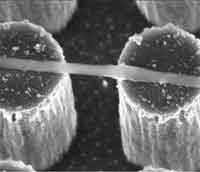 Bridges are exciting to cross, incredible works of engineering and they have made it possible for us to travel more easily, quickly and safely. The U.S. Congress even approved $400 million to build a bridge to nowhere. While bridges have been, and still are, essential components in every society's infrastructure, the bridge concept is becoming interesting to nanotechnology researchers as well. Nanomaterial air bridges enable nanoscale structures to be suspended as a two-point beam, creating a nanomechanical element that is isolated from a variety of substrate effects, including adhesion, temperature, conductivity, and parasitic capacitance. The bridge-like suspension makes nanoscale structures accessible along their length, which is beneficial for examining ehmt but also for device construction. It also allows nearfield probing, manipulation, and actuation of these suspended nanostructures. Scientists at the University of Louisville have found a way to build nanomaterial air bridges simply and conveniently.
Bridges are exciting to cross, incredible works of engineering and they have made it possible for us to travel more easily, quickly and safely. The U.S. Congress even approved $400 million to build a bridge to nowhere. While bridges have been, and still are, essential components in every society's infrastructure, the bridge concept is becoming interesting to nanotechnology researchers as well. Nanomaterial air bridges enable nanoscale structures to be suspended as a two-point beam, creating a nanomechanical element that is isolated from a variety of substrate effects, including adhesion, temperature, conductivity, and parasitic capacitance. The bridge-like suspension makes nanoscale structures accessible along their length, which is beneficial for examining ehmt but also for device construction. It also allows nearfield probing, manipulation, and actuation of these suspended nanostructures. Scientists at the University of Louisville have found a way to build nanomaterial air bridges simply and conveniently.
Sep 26th, 2007
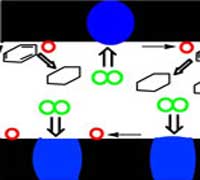 Back in the early 1800's it was observed that certain chemicals can speed up a chemical reaction - a process that became known as catalysis and that has become the foundation of the modern chemical industry. By some estimates 90% of all commercially produced chemical products involve catalysts at some stage in the process of their manufacture. Catalysis is the acceleration of a chemical reaction by means of a substance, called a catalyst, which is itself not consumed by the overall reaction. The most effective catalysts are usually transition metals or transition metal complexes. An everyday example of catalysis is the catalytic converter in your car which is used to reduce the toxicity of emissions from your car's engine. Here the catalysts are platinum and manganese which for instance convert harmful nitrogen oxides into harmless nitrogen and oxygen. Since catalysts provide a surface for the chemical reaction to take place on, nanoparticles with their extremely large surface area have become much researched as catalysts (as particles get smaller the larger their surface to volume ratio becomes). Especially in heterogeneous catalysis - where the catalyst is in a different phase (ie. solid, liquid and gas) to the reactants, and that is largely influenced by surface properties - use of nanoscale catalysts opens up a number of possibilities of improving catalytic activity and selectivity. Unfortunately, heterogeneous catalysts supported on a carrier prepared using traditional methods (e.g., impregnation) suffer from a number of problems, such as particle aggregation during preparation, sintering during use (especially at high temperatures), and catalyst leaching because of solvent or pressure drop. This is associated with the poor contact of the catalyst particle with the support surface. A new method of catalyst preparation coming out of Singapore may offer a new concept for catalyst optimization.
Back in the early 1800's it was observed that certain chemicals can speed up a chemical reaction - a process that became known as catalysis and that has become the foundation of the modern chemical industry. By some estimates 90% of all commercially produced chemical products involve catalysts at some stage in the process of their manufacture. Catalysis is the acceleration of a chemical reaction by means of a substance, called a catalyst, which is itself not consumed by the overall reaction. The most effective catalysts are usually transition metals or transition metal complexes. An everyday example of catalysis is the catalytic converter in your car which is used to reduce the toxicity of emissions from your car's engine. Here the catalysts are platinum and manganese which for instance convert harmful nitrogen oxides into harmless nitrogen and oxygen. Since catalysts provide a surface for the chemical reaction to take place on, nanoparticles with their extremely large surface area have become much researched as catalysts (as particles get smaller the larger their surface to volume ratio becomes). Especially in heterogeneous catalysis - where the catalyst is in a different phase (ie. solid, liquid and gas) to the reactants, and that is largely influenced by surface properties - use of nanoscale catalysts opens up a number of possibilities of improving catalytic activity and selectivity. Unfortunately, heterogeneous catalysts supported on a carrier prepared using traditional methods (e.g., impregnation) suffer from a number of problems, such as particle aggregation during preparation, sintering during use (especially at high temperatures), and catalyst leaching because of solvent or pressure drop. This is associated with the poor contact of the catalyst particle with the support surface. A new method of catalyst preparation coming out of Singapore may offer a new concept for catalyst optimization.
Sep 24th, 2007
 Just kidding - I always wanted to write a tabloid headline like that! In case you are expecting a story on the mysteries of crop circles caused by alien nanotechnology - stop reading right here; but the analogy is just too striking when you look at the amazing images coming out of the labs at the University of Southern California, where they developed a new technique to create three-dimensional carbon nanotube structures. While carbon nanotubes possess many exceptional properties which far exceed most known bulk materials, creating controlled nanotube (CNT) microstructures has always been a challenge. Overcoming this challenge is going to be key in developing useful and commercially viable CNT devices. Existing techniques for patterning three-dimensional CNT structures are based on the bottom-up growth of multiwalled CNTs (MWCNTs) from a patterned catalyst, which is limited to 2D-like geometries. Other, complex 3D microstructures have been fabricated with polymer-based resin materials but not with CNTs. The new technique developed by researchers in California uses a focused laser beam to selectively burn local regions of a dense forest of MWCNTs. This technique enables chemically sensitive fields to take advantage of nanotubes' exceptional properties and expand their possible applications into new areas.
Just kidding - I always wanted to write a tabloid headline like that! In case you are expecting a story on the mysteries of crop circles caused by alien nanotechnology - stop reading right here; but the analogy is just too striking when you look at the amazing images coming out of the labs at the University of Southern California, where they developed a new technique to create three-dimensional carbon nanotube structures. While carbon nanotubes possess many exceptional properties which far exceed most known bulk materials, creating controlled nanotube (CNT) microstructures has always been a challenge. Overcoming this challenge is going to be key in developing useful and commercially viable CNT devices. Existing techniques for patterning three-dimensional CNT structures are based on the bottom-up growth of multiwalled CNTs (MWCNTs) from a patterned catalyst, which is limited to 2D-like geometries. Other, complex 3D microstructures have been fabricated with polymer-based resin materials but not with CNTs. The new technique developed by researchers in California uses a focused laser beam to selectively burn local regions of a dense forest of MWCNTs. This technique enables chemically sensitive fields to take advantage of nanotubes' exceptional properties and expand their possible applications into new areas.
Sep 21st, 2007
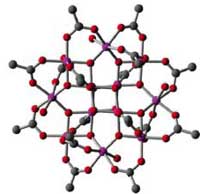 Lithium-ion (Li-ion) batteries are a type of rechargeable battery commonly used in consumer electronics. They are currently one of the most popular types of battery for portable electronics, with one of the best capacity-to-weight ratios, no memory effect, and a slow loss of charge when not in use. Lithium is useful in batteries because of its lightness (it is the lightest metal) and because of the high voltage of the redox reaction between Li and Li+. In lithium ion batteries, a layered compound - lithium copper oxide or or lithium nickel oxide - is utilized as a cathode. Although this material can provide high capacity, its charging/discharging rates are slow because these processes include the absorption/desorption of lithium in the cathode. Recently, organic radical batteries have been developed as a new type of rechargeable battery, in which organic radical polymers are utilized as a cathode active material. They achieved a very fast chargeable/dischargeable rate, though their capacities are lower than those of the lithium ion batteries. A lot of research has gone into fabricating lithium batteries that achieve both high capacity and fast charging/discharging. Researchers in Japan came up with a completely new idea - the molecular cluster battery - where the cathode active material is a well-known manganese molecular cluster that is stable and insoluble to most solvents and exhibits a multi-step redox reaction. Although the battery was rechargeable, in early experiments the fast charging�??discharging was not yet achieved due to the chemical decomposition of the cluster. Nevertheless, this is a first step that opens up a new branch of research into high-performance rechargeable molecular cluster batteries.
Lithium-ion (Li-ion) batteries are a type of rechargeable battery commonly used in consumer electronics. They are currently one of the most popular types of battery for portable electronics, with one of the best capacity-to-weight ratios, no memory effect, and a slow loss of charge when not in use. Lithium is useful in batteries because of its lightness (it is the lightest metal) and because of the high voltage of the redox reaction between Li and Li+. In lithium ion batteries, a layered compound - lithium copper oxide or or lithium nickel oxide - is utilized as a cathode. Although this material can provide high capacity, its charging/discharging rates are slow because these processes include the absorption/desorption of lithium in the cathode. Recently, organic radical batteries have been developed as a new type of rechargeable battery, in which organic radical polymers are utilized as a cathode active material. They achieved a very fast chargeable/dischargeable rate, though their capacities are lower than those of the lithium ion batteries. A lot of research has gone into fabricating lithium batteries that achieve both high capacity and fast charging/discharging. Researchers in Japan came up with a completely new idea - the molecular cluster battery - where the cathode active material is a well-known manganese molecular cluster that is stable and insoluble to most solvents and exhibits a multi-step redox reaction. Although the battery was rechargeable, in early experiments the fast charging�??discharging was not yet achieved due to the chemical decomposition of the cluster. Nevertheless, this is a first step that opens up a new branch of research into high-performance rechargeable molecular cluster batteries.
Sep 20th, 2007
 Probably any chemist must have dreamt about it: Quick isolation of a chemical from a reaction mixture without the hassle of tedious liquid handling lasting for hours. The problem is that today the product separation and postprocessing of organic compounds, proteins, nucleic acids, and natural products from complex reaction mixtures remains labor-intensive and costly. Catalytic processes in the liquid phase are important in many areas of the fine and specialty chemicals industries, and the use of solid catalysts means easier catalyst separation and recovery, hence facilitating their reuse. Usually a smaller catalyst particles means a higher activity, and sub micron particles are particularly attractive because they experience no significant attrition, i.e. no reduction in particle size. A major difficultly with small particles is the cumbersome fact that they are almost impossible to separate by conventional means, which can lead to the blocking of filters and valves by the catalyst. A possible solution to this problem is the magnetic separation of products from mixtures, as routinely applied in biochemistry. Unfortunately, the exorbitant price of magnetic microbeads and their low binding capacity limit their use for organic synthesis. Researchers in Switzerland, have now found a way to link organic molecules to metallic nanomagnets. This allows separating tagged molecules or reagents after synthesis within seconds. The technology is now explored in organic chemistry and biotechnology as an alternative to chromatography or crystallization. Combining classical organic synthesis or polymer production with magnetic separation could potentially revolutionize key processes in the chemical industry.
Probably any chemist must have dreamt about it: Quick isolation of a chemical from a reaction mixture without the hassle of tedious liquid handling lasting for hours. The problem is that today the product separation and postprocessing of organic compounds, proteins, nucleic acids, and natural products from complex reaction mixtures remains labor-intensive and costly. Catalytic processes in the liquid phase are important in many areas of the fine and specialty chemicals industries, and the use of solid catalysts means easier catalyst separation and recovery, hence facilitating their reuse. Usually a smaller catalyst particles means a higher activity, and sub micron particles are particularly attractive because they experience no significant attrition, i.e. no reduction in particle size. A major difficultly with small particles is the cumbersome fact that they are almost impossible to separate by conventional means, which can lead to the blocking of filters and valves by the catalyst. A possible solution to this problem is the magnetic separation of products from mixtures, as routinely applied in biochemistry. Unfortunately, the exorbitant price of magnetic microbeads and their low binding capacity limit their use for organic synthesis. Researchers in Switzerland, have now found a way to link organic molecules to metallic nanomagnets. This allows separating tagged molecules or reagents after synthesis within seconds. The technology is now explored in organic chemistry and biotechnology as an alternative to chromatography or crystallization. Combining classical organic synthesis or polymer production with magnetic separation could potentially revolutionize key processes in the chemical industry.
Sep 19th, 2007
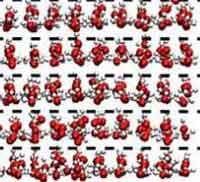 There is a huge demand for medical implants for almost every body part you can think of. As we have reported here before, the market for medical implant devices in the U.S. alone is estimated to be $23 billion per year and it is expected to grow by about 10% annually for the next few years. Implantable cardioverter defibrillators, cardiac resynchronization therapy devices, pacemakers, tissue and spinal orthopedic implants, hip replacements, phakic intraocular lenses and cosmetic implants will be among the top sellers. Current medical implants, such as orthopedic implants and heart valves, are made of titanium and stainless steel alloys, primarily because they are biocompatible. Unfortunately, in many cases these metal alloys with a life span of 10-15 years may wear out within the lifetime of the patient. With recent advances in industrial synthesis of diamond and diamond-like carbon film bringing prices down significantly, researchers are increasingly experimenting with diamond coatings for medical implants. On the upside, the wear resistance of diamond is dramatically superior to titanium and stainless steel. On the downside, because it attracts coagulating proteins, its blood clotting response is slightly worse than these materials and the possibility has been raised that nanostructured surface features of diamond might abrade tissue. That's not something you necessarily want to have in your artificial knee or hip joints (although some of the currently used implant materials cause problems as well). Researchers have now run simulations that show that thin layers of ice could persist on specially treated diamond coatings at temperatures well above body temperature. The soft and hydrophilic ice multilayers might enable diamond-coated medical devices that reduce abrasion and are highly resistant to protein absorption.
There is a huge demand for medical implants for almost every body part you can think of. As we have reported here before, the market for medical implant devices in the U.S. alone is estimated to be $23 billion per year and it is expected to grow by about 10% annually for the next few years. Implantable cardioverter defibrillators, cardiac resynchronization therapy devices, pacemakers, tissue and spinal orthopedic implants, hip replacements, phakic intraocular lenses and cosmetic implants will be among the top sellers. Current medical implants, such as orthopedic implants and heart valves, are made of titanium and stainless steel alloys, primarily because they are biocompatible. Unfortunately, in many cases these metal alloys with a life span of 10-15 years may wear out within the lifetime of the patient. With recent advances in industrial synthesis of diamond and diamond-like carbon film bringing prices down significantly, researchers are increasingly experimenting with diamond coatings for medical implants. On the upside, the wear resistance of diamond is dramatically superior to titanium and stainless steel. On the downside, because it attracts coagulating proteins, its blood clotting response is slightly worse than these materials and the possibility has been raised that nanostructured surface features of diamond might abrade tissue. That's not something you necessarily want to have in your artificial knee or hip joints (although some of the currently used implant materials cause problems as well). Researchers have now run simulations that show that thin layers of ice could persist on specially treated diamond coatings at temperatures well above body temperature. The soft and hydrophilic ice multilayers might enable diamond-coated medical devices that reduce abrasion and are highly resistant to protein absorption.
Sep 18th, 2007
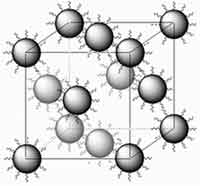 Zinc Oxide (ZnO) has long been used in its powdered form as pigments in paints, coatings for papers, in the commercial manufacture of rubber goods as well as UVA and UVB blocker and mild antimicrobial in cosmetics. ZnO is also one of the most important semiconductor compounds and numerous reports have been documented in the literature about the preparation and characterization of ZnO nanocrystals. While polycrystalline forms of ZnO have been used for technical uses such as piezoelectric transducers, light emitting diodes, and transparent conducting films, the progress in developing single crystal bulk ZnO have brought its promise as a wide band gap semiconductor to the fore. Superstructures formed from ZnO nanocrystal quantum dots may find applications in various areas such as optics, electronics and magnetism. For these 2D and 3D superstructures to be useful they need to be well-ordered. Usually, nanocrystals without any surface modification are less stable and they usually undergo aggregation or crystal growth, and consequently it is rather hard for bare nanocrystals to self-assemble into 2D, and especially into 3D, ordered structures. So far, most well-ordered assemblies of nanocrystals have been prepared through a surface modification approach. Efforts have been made to prepare superstructures composed of ZnO nanocrystals but it is rather challenging to obtain well-ordered 3D ZnO superlattices. Researchers in China have now found that ZnO nanocrystals capped with ionic liquids spontaneously assemble into a three-dimensional lattice. Apparently, simply drying a solution of the modified ZnO nanocrystals is all that is needed for the superlattice to form. The presence of the ionic liquid prevents the nanocrystals from aggregating.
Zinc Oxide (ZnO) has long been used in its powdered form as pigments in paints, coatings for papers, in the commercial manufacture of rubber goods as well as UVA and UVB blocker and mild antimicrobial in cosmetics. ZnO is also one of the most important semiconductor compounds and numerous reports have been documented in the literature about the preparation and characterization of ZnO nanocrystals. While polycrystalline forms of ZnO have been used for technical uses such as piezoelectric transducers, light emitting diodes, and transparent conducting films, the progress in developing single crystal bulk ZnO have brought its promise as a wide band gap semiconductor to the fore. Superstructures formed from ZnO nanocrystal quantum dots may find applications in various areas such as optics, electronics and magnetism. For these 2D and 3D superstructures to be useful they need to be well-ordered. Usually, nanocrystals without any surface modification are less stable and they usually undergo aggregation or crystal growth, and consequently it is rather hard for bare nanocrystals to self-assemble into 2D, and especially into 3D, ordered structures. So far, most well-ordered assemblies of nanocrystals have been prepared through a surface modification approach. Efforts have been made to prepare superstructures composed of ZnO nanocrystals but it is rather challenging to obtain well-ordered 3D ZnO superlattices. Researchers in China have now found that ZnO nanocrystals capped with ionic liquids spontaneously assemble into a three-dimensional lattice. Apparently, simply drying a solution of the modified ZnO nanocrystals is all that is needed for the superlattice to form. The presence of the ionic liquid prevents the nanocrystals from aggregating.
Sep 12th, 2007
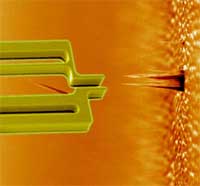 Hands-on nanotechnology: towards a nanorobotic assembly line (Nanowerk Spotlight) Until the twentieth century, a single craftsman or team of craftsmen would normally create each part of an industrial product individually and assemble them together into a single item, making changes in the parts so that they would fit together and work together; the so-called English System of manufacture. Then Henry Ford came along and in 1907-08 developed the assembly line for his Model T automobile. This innovation revolutionized not only industry but also our society because it allowed mass production of industrial goods at much lower cost than before. At its core, an assembly line is a manufacturing process in which interchangeable parts are added to a product in a sequential manner to create a finished product. Nanotechnology techniques today are pretty much where the industrial world was before Ford's assembly line - a domain of craftsmen and not of mass production. It has long been a dream for nanotechnologists that robots could one day be used in a similar way to produce nanodevices. A group of researchers from Denmark and Germany have now developed the rudimentary beginnings of the nanotechnology equivalent of an assembly line. They have shown 'pick-and-place' assembly of a working device using a silicon gripper - a robotic 'hand' some 10000 times smaller than a human hand. This nanogripper, controlled by a nanorobotic arm, is capable of picking up a carbon nanofiber (CN) and fix it onto the tip of an atomic force microscope cantilever.
Hands-on nanotechnology: towards a nanorobotic assembly line (Nanowerk Spotlight) Until the twentieth century, a single craftsman or team of craftsmen would normally create each part of an industrial product individually and assemble them together into a single item, making changes in the parts so that they would fit together and work together; the so-called English System of manufacture. Then Henry Ford came along and in 1907-08 developed the assembly line for his Model T automobile. This innovation revolutionized not only industry but also our society because it allowed mass production of industrial goods at much lower cost than before. At its core, an assembly line is a manufacturing process in which interchangeable parts are added to a product in a sequential manner to create a finished product. Nanotechnology techniques today are pretty much where the industrial world was before Ford's assembly line - a domain of craftsmen and not of mass production. It has long been a dream for nanotechnologists that robots could one day be used in a similar way to produce nanodevices. A group of researchers from Denmark and Germany have now developed the rudimentary beginnings of the nanotechnology equivalent of an assembly line. They have shown 'pick-and-place' assembly of a working device using a silicon gripper - a robotic 'hand' some 10000 times smaller than a human hand. This nanogripper, controlled by a nanorobotic arm, is capable of picking up a carbon nanofiber (CN) and fix it onto the tip of an atomic force microscope cantilever.
Sep 11th, 2007
 Bridges are exciting to cross, incredible works of engineering and they have made it possible for us to travel more easily, quickly and safely. The U.S. Congress even approved $400 million to build a bridge to nowhere. While bridges have been, and still are, essential components in every society's infrastructure, the bridge concept is becoming interesting to nanotechnology researchers as well. Nanomaterial air bridges enable nanoscale structures to be suspended as a two-point beam, creating a nanomechanical element that is isolated from a variety of substrate effects, including adhesion, temperature, conductivity, and parasitic capacitance. The bridge-like suspension makes nanoscale structures accessible along their length, which is beneficial for examining ehmt but also for device construction. It also allows nearfield probing, manipulation, and actuation of these suspended nanostructures. Scientists at the University of Louisville have found a way to build nanomaterial air bridges simply and conveniently.
Bridges are exciting to cross, incredible works of engineering and they have made it possible for us to travel more easily, quickly and safely. The U.S. Congress even approved $400 million to build a bridge to nowhere. While bridges have been, and still are, essential components in every society's infrastructure, the bridge concept is becoming interesting to nanotechnology researchers as well. Nanomaterial air bridges enable nanoscale structures to be suspended as a two-point beam, creating a nanomechanical element that is isolated from a variety of substrate effects, including adhesion, temperature, conductivity, and parasitic capacitance. The bridge-like suspension makes nanoscale structures accessible along their length, which is beneficial for examining ehmt but also for device construction. It also allows nearfield probing, manipulation, and actuation of these suspended nanostructures. Scientists at the University of Louisville have found a way to build nanomaterial air bridges simply and conveniently.
 Subscribe to our Nanotechnology Spotlight feed
Subscribe to our Nanotechnology Spotlight feed





